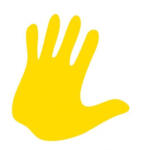Five Practices to Support Early Literacy
The term early literacy simply means what a child knows about reading and writing before he or she learns to read and write. You are your child’s first and most important teacher. Children are learning from you all the time, and the great news is that the best way to promote early literacy is through five easy practices that you are probably already doing with your child every day — reading, writing, talking, singing, and playing. Here are some ideas to make these five practices fun and rewarding for both of you.
Read
Read to your child. This is the single most important thing you can do to help your child get ready to read.
- Have a conversation about the book while you read it or upon a second reading. Children’s brains are fired up for learning when the conversation goes back and forth, and they are truly engaged in the book.
- When reading with babies who aren’t yet talking, point out what you see and explain what’s happening. Respond to their babbling by continuing the conversation and pointing to what you’re talking about.
- Help build vocabulary by giving further information when your child responds to what she or he sees — “Yes, you’re right. It’s a truck. It’s a fire truck, and look at the hose that has a nozzle on the end.”
- Ask open-ended questions like, “What do you think will happen next?” “How is this story similar to the other story we read?” “What did you like about this story?” “Let’s talk about the artwork in these two books. How is it the same, and how is it different? Do you have a favorite of the two?”
- Stories are a powerful way for children to understand their own feelings, learn empathy, and also learn your family’s values. Take the time to ask questions that support this understanding, and share your own feelings about a book and its characters.
- Read informational books as well as story books. The language of books is richer than the language of conversation, and there’s different language in stories than in informational texts.
- Read with expression. Allow your child to choose what you read, and make it fun! Make animal noises or be silly together. When you enjoy the time, your child will enjoy it. This reinforces that reading is important.
- When your child loses interest, try another time. This will continue to make the reading experience emotionally satisfying.
- Let your child see you reading. Talk about the books or magazines you like and why you like them.
Write
Writing helps kids learn that what they say can be written down, and someone else can read it or speak it. Print has meaning.
- Scribbling is the start of writing, so have lots of materials available. Crayons, markers, paint, pencils, pens, chalk, and even water with a paintbrush are great ways to encourage writing.
- Write stories together using your child’s drawings, photos or objects found on a nature walk. Let your child tell the story of what you did, and you write it down. Later, read that story again, or share it with others. Create a library of books you create with your child, and don’t forget to add the “publication” date!
- Fill a shallow pan with salt or sand for finger writing.

- Write your child’s name, and show her/him how to make the letters. Talk about the shapes of the letters — the straight lines, curves, circles, triangles, etc. Find those letters in books you read.
- Play games like restaurant or grocery store and make lists together. Make paper money to pay for your food.
- Make cards together and send them in the mail. Encourage friends and family members to send mail directly to your child. Don’t forget to save the envelopes with stamps for art projects!
- Go to the beach and write or draw with sticks.
- Make a portable easel or clipboard from cardboard. Clip paper onto it and head outside to paint or draw.
Talk
Children’s brains are fired up for language! They listen to and learn the languages around them beginning in the womb, and repeat what they hear. This starts with sounds that later become words and sentences.
- Children’s brains are particularly fired up for back and forth conversations. The more words and conversations you share together, the better prepared they are for learning. This is especially reinforced by your loving touch and a sense of shared enjoyment. Adults are the meaning-makers in children’s lives.
- Human brains have the greatest capacity to absorb more than one language in the first ten years of life. Young children — even babies — can differentiate between languages, so speaking with your child in one language in one setting, and another language with other people or in another setting is just fine, and actually is beneficial. Research shows that children who speak more than one language have stronger problem-solving capacity later in life.
- Young children learn best during playful, daily activities, so talk together throughout your day. Talk about what you see, hear, feel and think. Encourage your child to tell you what she/he knows and is thinking.
- Talk about the order of things. When cooking, invite your child to help, and talk about what happens first, then next, etc. Likewise, read a story and then go back and talk about what happened first, next, and at the end.
- Talk about concepts such as color, shape, size, texture and spatial relationships. Share math and science concepts and vocabulary like gravity, velocity, sink, float, addition, sphere, triangle, pyramid, cube, etc., and connect these concepts with toys and through play. This will make reading these words, and understanding their meaning, easier later on.
- Point out rhyming words, and encourage your child to fill in the rhyme. Rhyming helps break down our language into smaller sounds, making learning to read easier.
- Point out and talk about words that start with the same sound. Connect letters with sounds, following your child’s interest and starting with their name.
- Encourage your child to guess and predict what might happen in a situation or in a story. Talk through what actually happens and why. Even if their prediction didn’t come true, reinforce their ideas and their effort.

Sing
Your voice is the most important voice in your child’s world. The quality of your singing voice does not matter. Go for it — sing together!
- Children love getting positive attention from the adults in their lives. Singing together helps a child feel safe and loved.
- Singing slows language down so children can hear the smaller sounds in words.
- The words in songs are often different than those in conversation, so children learn new words this way.
- Songs offer repeated phrases, which help children build confidence through repetition
- Singing fires up many parts of the brain and gives a variety of ways to remember things.
- Sing the ABC song and do actions (sit, jump up, etc.) when the letters of your names are sung.
- Singing makes daily activities more fun. Clap to the rhythm of a song, or chant as you march out the door singing, “One, two, buckle my shoe.” Before reading a story sing the song, ”The more we read together, together, together. The more we read together, the happier we’ll be.”
Play
Play is not only fun but is the way children learn best. They are born explorers and love it when you make daily activities adventuresome. Through play, children make meaning of their lives by reliving, and talking through, their experiences.
- Give your child lots of time for playful exploration both alone and with friends. Through imagination, simple props can make great toys. Blankets, furniture, and a flashlight become a fort. Boxes make blocks or houses for favorite dolls or stuffed animals. Balls can be a bowling alley.
- Play together! You have the experience and language to extend and deepen the play. Act out the story after reading a book. Keep a box of scarves, hats, and dress-up clothes, and ask friends and family members to add to it. Take turns being different characters, complete with costumes, voices, and actions.
- Keep a box with art supplies, and encourage family members to add to it when giving gifts. Include paper of all sorts and sizes, child-friendly scissors, markers, hole punches, glue sticks and stamp pads, rubber stamps, ribbon, stickers, tape, shaped confetti, tissue paper, yarn, string, old magazines, newspapers, and mailing stamps. Pull it out on a rainy day or when it’s time to make a greeting card.
- Under supervision, broken machines can be great opportunities for children to use real tools to take them apart and learn about their parts.
- Bring out the measuring tape and teach your child how to measure. Lie on the ground and take turns measuring each other and the rest of the family. (You may lose your child for a day or two as they measure the whole house!)
- Through indoor and outdoor play children strengthen their bodies, build dexterity, develop language and social skills, and deepen their understanding of the world.
- Keep a box with random objects such as buttons, zippers, magnets, foreign coins, beads, pipe cleaners, stones, soft wire, small discarded toys, paper clips, clothes pins, paint sticks, stir sticks, cotton balls, etc. Pull it out periodically and mess around with it. Which objects do you each predict will sink or float in a bucket of water? How can you make a catapult with a paint stick and a cotton ball? What happens when you add a spoon and a rubber band to your catapult? Take turns balancing objects on the ends of a paint stick over the edge of a table. Which objects balance perfectly? What happens when you pull the paint stick further over the edge?
